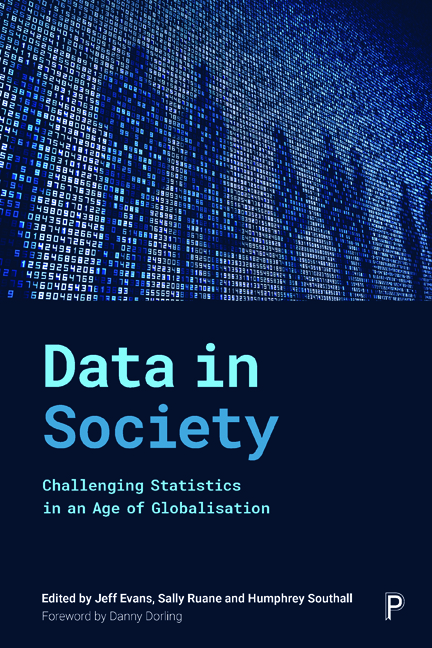Book contents
- Frontmatter
- Contents
- List of figures, tables and boxes
- Notes on contributors
- Foreword
- Preface
- General introduction
- Part I How data are changing
- Part II Counting in a globalised world
- Part III Statistics and the changing role of the state
- Part IV Economic life
- Part V Inequalities in health and wellbeing
- Part VI Advancing social progress through critical statistical literacy
- Epilogue: progressive ways ahead
- Index
7 - Counting the population in need of international protection globally
Published online by Cambridge University Press: 30 April 2022
- Frontmatter
- Contents
- List of figures, tables and boxes
- Notes on contributors
- Foreword
- Preface
- General introduction
- Part I How data are changing
- Part II Counting in a globalised world
- Part III Statistics and the changing role of the state
- Part IV Economic life
- Part V Inequalities in health and wellbeing
- Part VI Advancing social progress through critical statistical literacy
- Epilogue: progressive ways ahead
- Index
Summary
Introduction
The significance of counting populations in need of international protection has become increasingly acknowledged as central to the effective design and delivery of humanitarian policies. Recent initiatives have emphasised the need for better data (IOM and McKinsey, 2018), as evidenced in the 2016 Global Compact for Migrants and Refugees and the 2030 Agenda for Sustainable Development. Of the 17 goals and 169 targets included in the Agenda, one specific migration target seeks to ‘facilitate orderly, safe, regular migration’ while others concern legal identity, birth registration, human trafficking and disaggregating data. Thus the International Forum on Migration Statistics held in Paris in January 2018 noted the salience of public debates around data and the need to look at data in the broader context within which they are created.
According to the UN High Commissioner for Refugees (UNHCR), by the end of 2016 there was a total of 22.5 million refugees,1 with 17.2 million under UNHCR's mandate and 5.3 million refugees registered by the United Nations Relief and Works Agency for Palestine Refugees in the Near East (UNRWA) (UNHCR, 2017). The total number of refugees is the highest on record, although the annual rate of growth has slowed since 2012. In 2017, approximately 2 million people lodged applications for asylum while 2.8 million asylum seekers were awaiting determination of their refugee status (Table 7.1).
UNHCR estimates that, at the end of 2016, those under 18 years of age constituted roughly 51% of the global refugee population. The proportion of adult females remained relatively stable, at between 47% and 49%, over the same period. An estimated 60% of refugees were located in urban areas at the end of 2016.
However, one major problem complicating the task of effective humanitarian protection is the absence of accurate data on the populations most affected. For only some of the populations are disaggregated data available by age and sex. Furthermore, official statistics and data from major international agencies often struggle to cope with the messiness and fluidity of categories of people on the move as they transit, reside and possibly return to countries of previous residence or origin (Franke, 2009). Data are compiled by a diversity of organisations ranging from national states, regional bodies and international organisations, many of which operate with different definitions or collect data with different levels of detail and disaggregation.
- Type
- Chapter
- Information
- Data in SocietyChallenging Statistics in an Age of Globalisation, pp. 91 - 102Publisher: Bristol University PressPrint publication year: 2019



